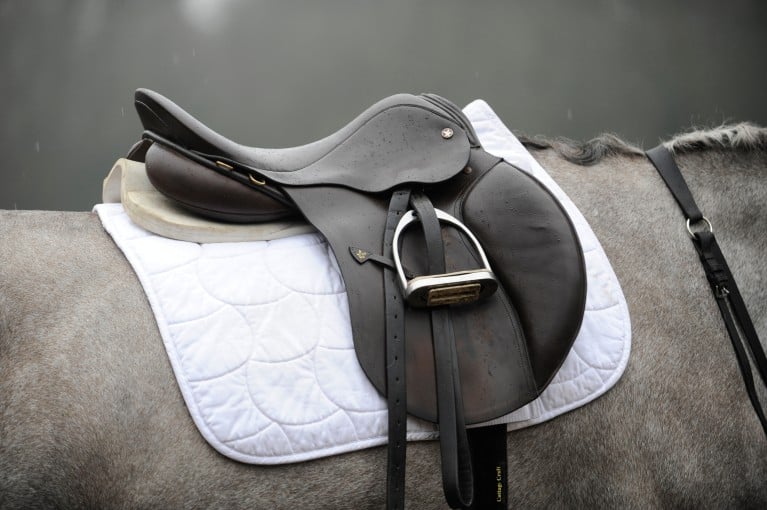Q: I use a close-contact Wintec saddle with a changeable gullet for my 15.2hh TB x New Forest mare. However, it slips forward, when my mare tends to buck. Please can you help?

Liz McGoun answers:
I don’t know your horse’s age or her general conformation, so her shape may change as she matures. Without a photograph, I suspect that the New Forest portion of her breeding has given her a forward/undefined girth groove – ie, the girth groove is close up behind the elbow and toward the front end, in relation to the withers.
This results in the saddle being pulled forward, allowing the girth to locate in the girth groove area.
It may be that your mare is also croup-high with narrow shoulders, and both of these are common causes of the saddle moving forward.
With this type of conformation, a point strap (girth strap attached to the foremost part of the saddle tree – ‘the points’) will allow the saddle to sit a little further back, so the girth will remain in the girth groove. The points are the ‘arms’ of the saddle, which sit each side of the shoulder, forming the front arch of the tree.
Point duty
Some people argue that a point strap will restrict the shoulder. However, it is my belief that locating the saddle behind the shoulder will free this area up, whereas having the saddle sitting on top of the scapula (shoulder blade) will surely restrict the shoulder and cause discomfort. Of course, there will be exceptions, and I do know horses who do not move as freely with a point strap attached.
A Wintec saddle will not have point straps, and the forward-cut shape of the flaps and panel will encourage the saddle to shoot up the shoulder. If you intend to do much jumping, you
will need a forward-cut flap.
However, if you do not jump, or only over small fences, a straighter-cut flap will help – eg, GPD/VSD-style saddles. And whatever style of flap you require, a point strap will be needed.
Balancing act
It is crucial that the saddle is correctly balanced – if it is too high/narrow in front, therefore tipping back, this will cause the rider’s pelvis to tip, throwing the leg forward and causing the saddle to ride up the neck.
A slimline panel (possibly a foam panel) will help, as ideally, the saddle should sit close to the back, giving the impression of being part of the horse, not perched on top. Reducing bulk in the panels will help prevent the saddle from working forward. And as ever, a wide gullet and large bearing surface are essential for a comfortable fit.
The saddle also needs to be the correct size for your bottom! Too small, and you may well encourage it to go forward by sitting too far back on the cantle – this, therefore, will lift the head and scoot the saddle forward.
Too large, and you’d rattle around, unable to locate correctly in the centre of the seat. Again, this insecurity could cause the saddle to work forward.
Alternative accessories
With regard to girths, do not use elasticated ones – they allow the saddle to move forward (unless overtightened) which will cause discomfort. I prefer the Stubben string girths – they spread the pressure well over the entire width of the girth, with just a little carried on each broad, soft cord. Each cord also helps to grip, keeping the girth located in the girth groove without bulk behind the elbow, stabilising the saddle.
I would also try a Barnsby grip pad – although bulkier than a cotton quilted numnah, it will not adversely affect saddle fit. The rubberised mat sticks to the saddle, and the mesh underneath grips the horse’s back. They don’t need straps to fix to the saddle, come in a variety of styles, and can be machine-washed.















